The journey from rescue to release: What happens when an injured bird is received by the KFBG rescue team staff?
Summer is upon us and we are now in the busiest season for the Wild Animal Rescue Centre (WARC). Let’s take a look at the role of the WARC as it applies to the rescue and rehabilitation of wild birds!
Most of the native patients in our rescue centre are actually very common bird species that are widespread in HK and also found in urban and rural areas. Some arrivals have fallen out of nests, others are stuck to rodent glue traps, or have been attacked by cats - window collisions also account for a large number of cases – all are common problems faced by wild birds and reasons they are sent to KFBG.
Upon arrival at the rescue centre, our professional animal care team will carefully examine every bird from head to toe, making sure that no hidden wounds or abnormalities are missed. Subcutaneous fluids are provided to every bird as most of them are dehydrated. For further detail radiographic and endoscopic examinations may be carried out especially if we suspect any bone fracture or digestive tract infection. A detailed treatment plan is developed for every patient. Treatments such as medication, support feeding, bandaging and surgery are given depending on the patients’ needs. They will stay in warm and indoor enclosures under intensive care until their conditions becomes stable.
When the animal is showing good recovery, it is time to plan for release! Animals are moved to larger outdoor enclosures which mimic their natural habitat so as to exercise and re-adapt to the natural environment. Health checks and flight tests are carried out regularly to ensure that every patient is on the road to recovery.
Prior to release, every bird is assessed for physical fitness, flight ability and foraging skills. Only experienced professionals can decide whether a bird is suitable for releases or not. Banding or ringing may be applied to some species so that we are able to recognize them after releasing and these birds may also contribute to conservation-related research being carried out by collaborators.
Rehabilitation of wild birds is never easy and can sometimes take over a year. Professional knowledge from experienced wildlife rehabilitators and appropriate rehabilitation facilities are crucial in order to increase the success rate following release. Animals may become imprinted or too tame during captivity and this could affect survival after release. There are methods used by the professionals during rehabilitation that help to minimise contact with the animal and increase the chance of survival but this aspect of the work can be quite complicated and demanding. Handling and the keeping of wild birds by an unauthorised person is illegal in Hong Kong under the Wild Animal Protection Ordinance.
Please think carefully before rescuing wild birds, determine whether a young bird really needs rescue or whether its parents are nearby caring for it (more details). For injured or sick wild birds, please call the SPCA emergency hotline at 2711 1000, AFCD at 1823 or KFBG at 2483 7200 as soon as possible, the quicker the bird receives treatment the better the chance of survival.
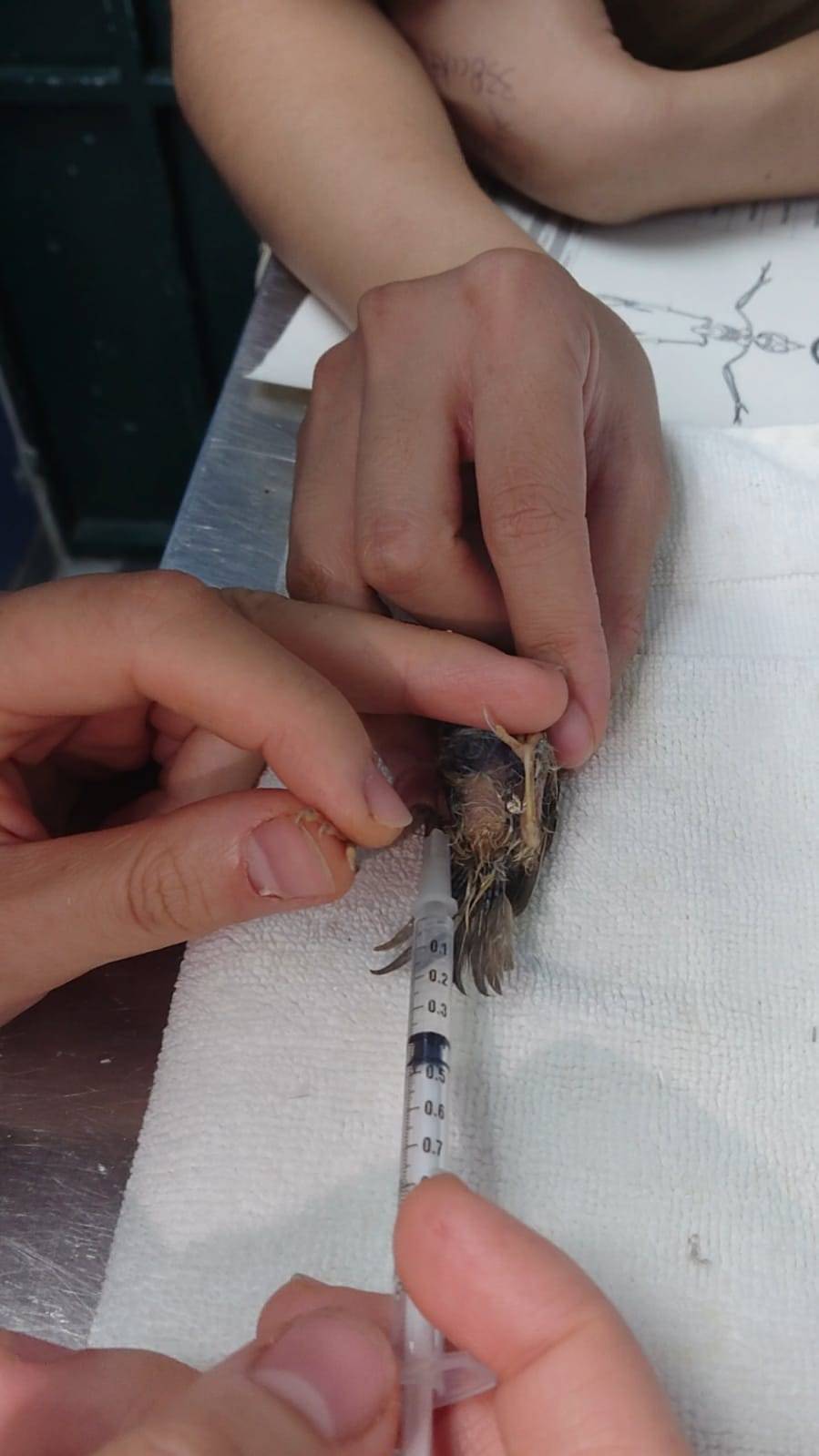
▲ A nestling Tree Sparrow (Passer montanus) receiving subcutaneous fluids to prevent dehydration upon arrivals. (Photo Credit: KFBG)
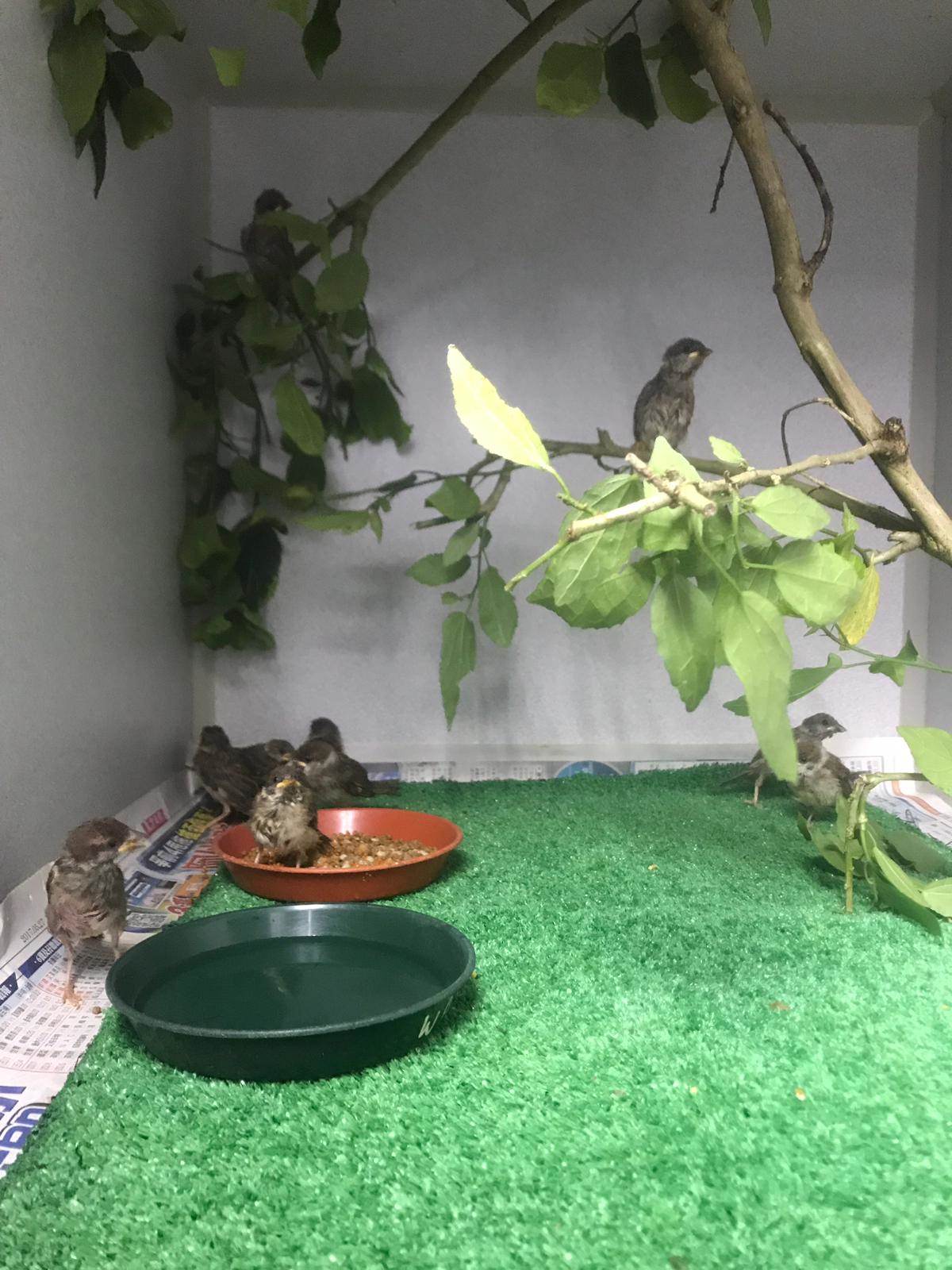
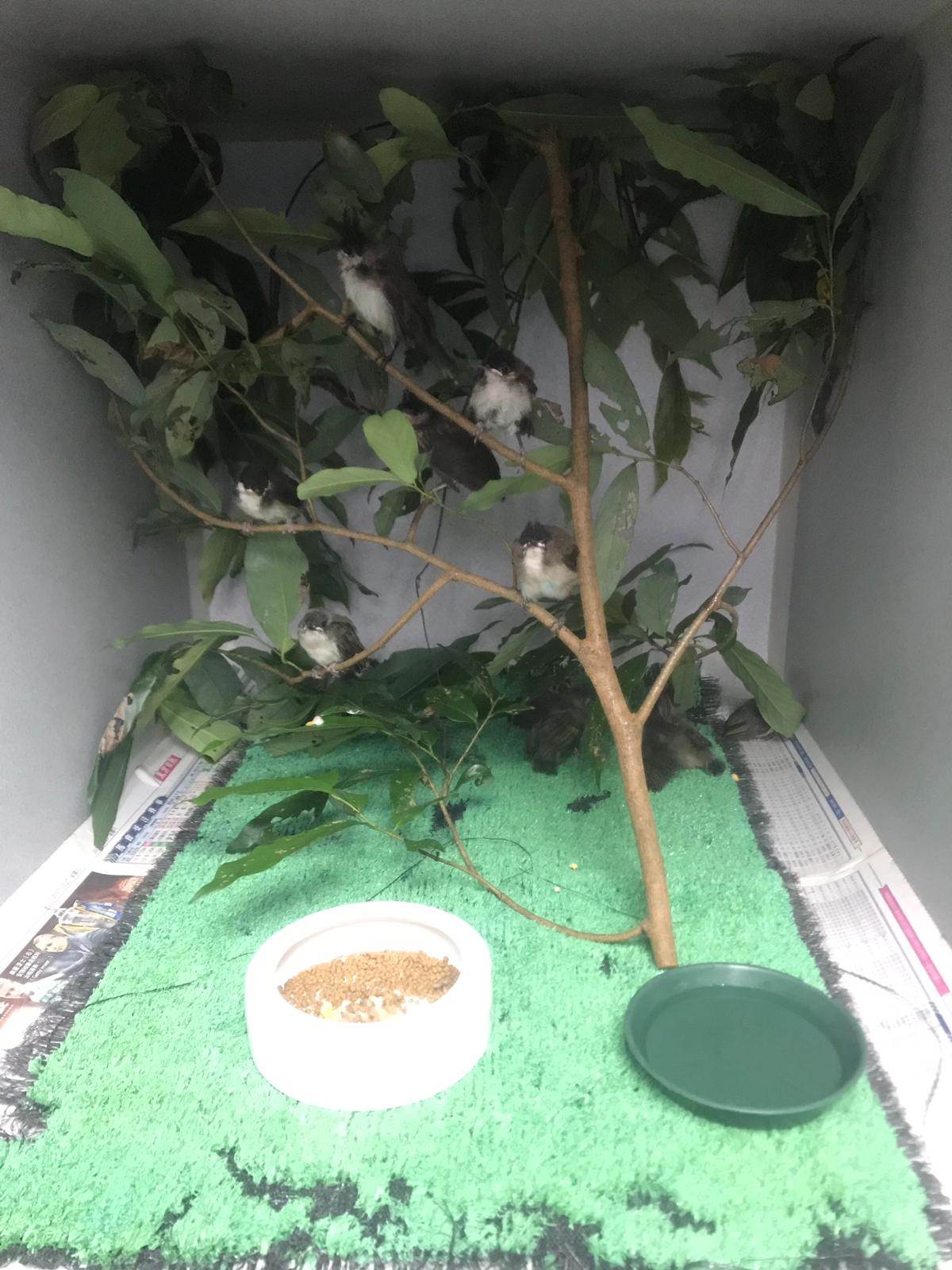
▲ Temporary enclosures for nestling birds that require regular feeding. Placing several compatible birds together actually reduces the stress in individuals as there is natural interaction with neighbours. (Photo Credit: KFBG)
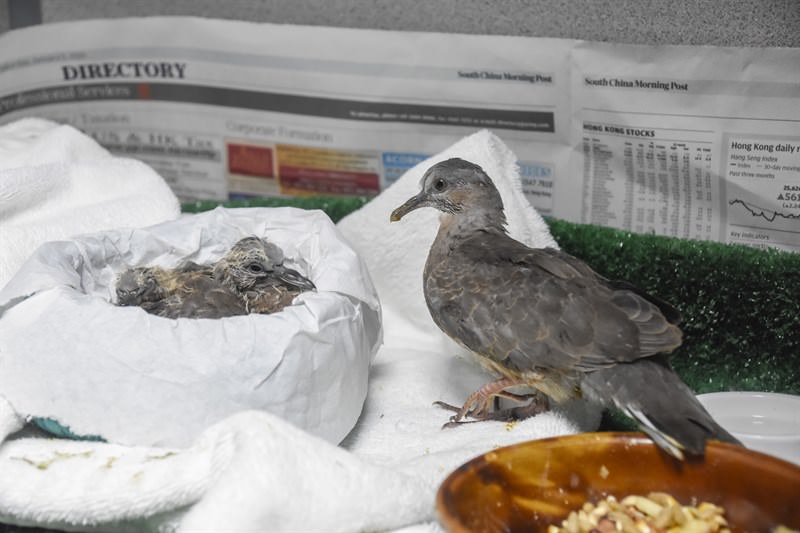
▲ Different aged nestlings of the same species can be maintained together, sometimes this encourages individuals to feed in captivity. (Photo Credit: KFBG)
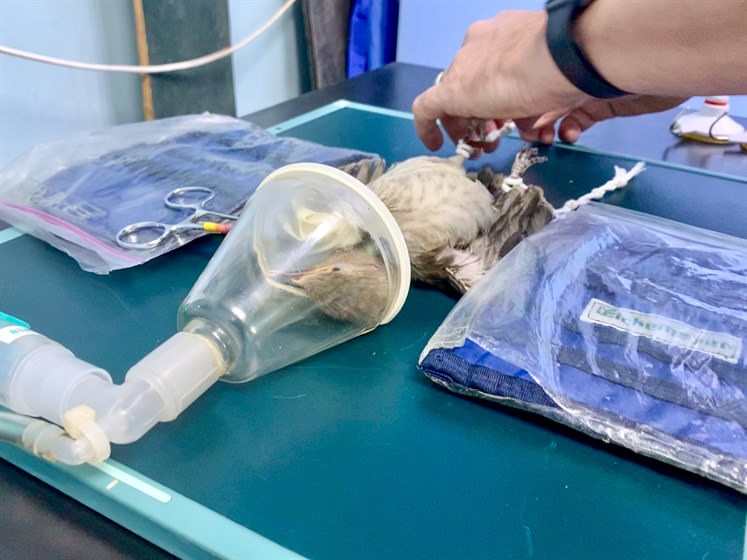
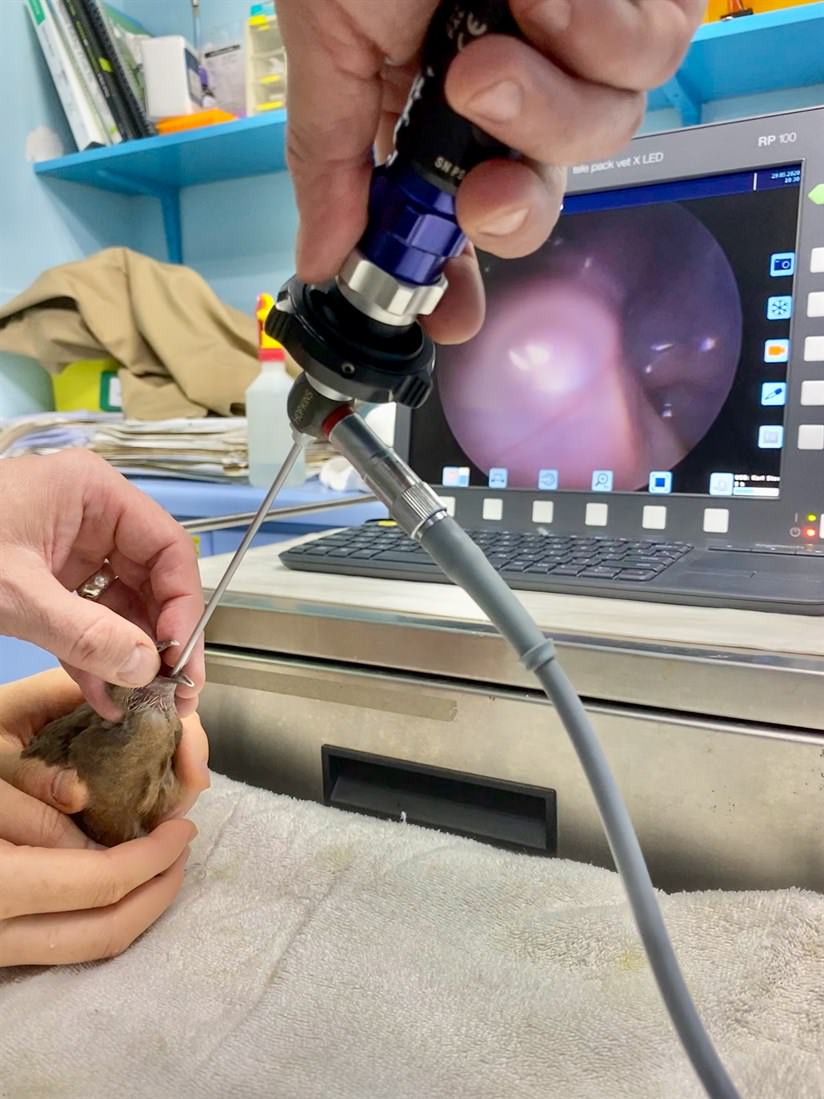
▲ Black-collared Starling (Gracupica nigricollis) being prepared for a radiograph, and endoscopy of a Spotted Dove (Spilopelia chinensis) to investigate internal problems. (Photo Credit: KFBG)
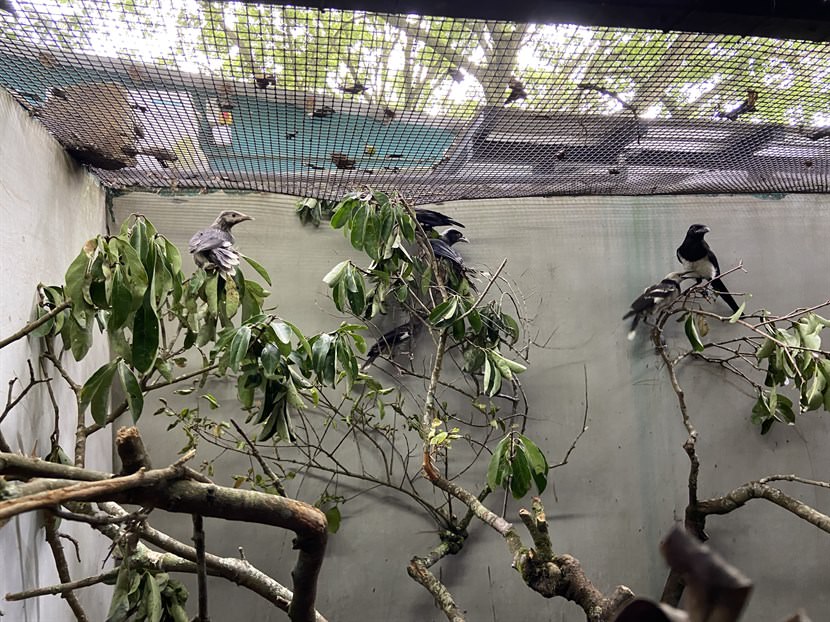

▲ Black-collared Starlings (Gracupica nigricollis), Red-billed Blue Magpie (Urocissa erythroryncha) and Common Magpie (Pica pica) resting in their large enclosures with lots of vegetation. They will develop their foraging skills and adapt to the natural environment in these enclosures before being released. Large enclosures can also prevent birds from becoming imprinted or tame by keeping suitable distance between them and the animal keepers. (Photo Credit: KFBG)
.jpg)
▲ Staff ringing a Common Myna (Acridotheres tristis) before releasing it. Bird ringing can only be carried out with by a government authorised bird handler. (Photo Credit: KFBG)

